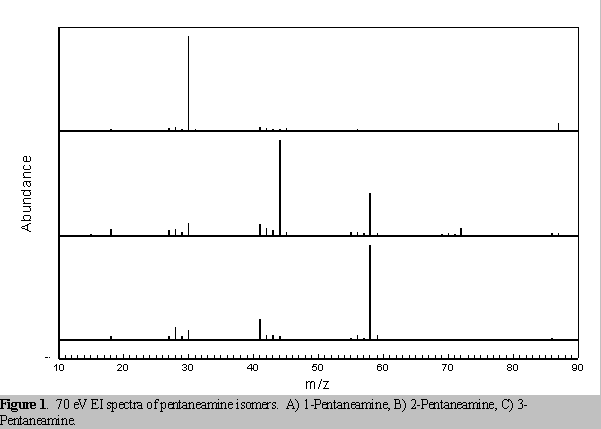
Functional groups can have a significant effect the fragmentation patterns observed in mass spectrometry. For example, aliphatic amines prefer to undergo cleavage at the C-C bond to produce a relatively stable CH2NH2+ ion. The resulting fragments distinguish primary, secondary, and tertiary amines.

The mass spectra of three different n-pentaneamine isomers are shown in Figure 18. 1-Pentaneamine has an odd number of nitrogen atoms so the molecular ion (m/z 87) has an odd mass to charge ratio and the cleavage fragment (m/z 30) has an even mass to charge ratio. -Cleavage of 1-pentaneamine produces CH2NH2+ (m/z 30) and C4H9. The C4H9 fragment is not observed in the mass spectrum because since this is a neutral fragment. 2-Pentaneamine has two alpha-cleavage sites. Loss of CH3 produces C4H8NH2+ (m/z 72) and loss of C3H7 produces C2H4NH2+ (m/z 44). Both of these ions are observed but the greater abundance of the m/z 44 signal indicates that loss of C3H7 is favored. The additional peak at m/z 58 corresponds to C3H6NH2+ which could be formed by alpha-cleavage loss of C2H5. 3-Pentaneamine has two alpha-cleavage sites but they are symmetric so cleavage at either site results in loss of C2H5. Loss of C2H5 produces C3H6NH2+ (m/z 58), the base peak in the mass spectrum. Now spend some time with a piece of scratch paper and interpret some other peaks in these spectra.
